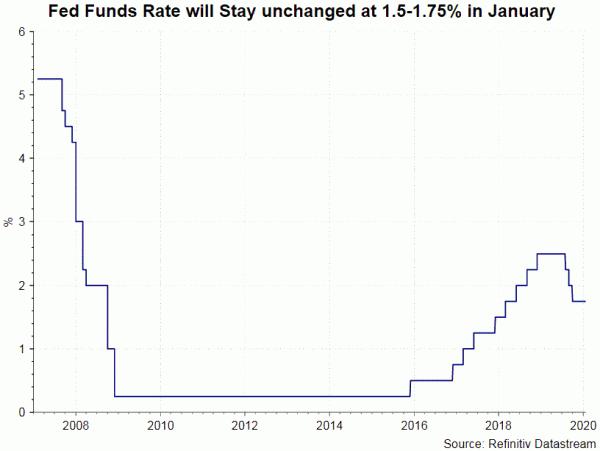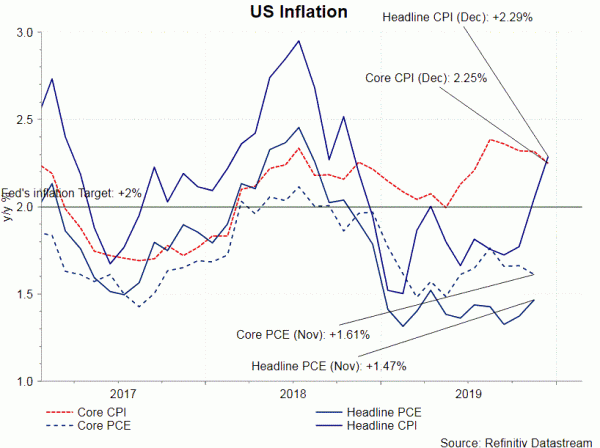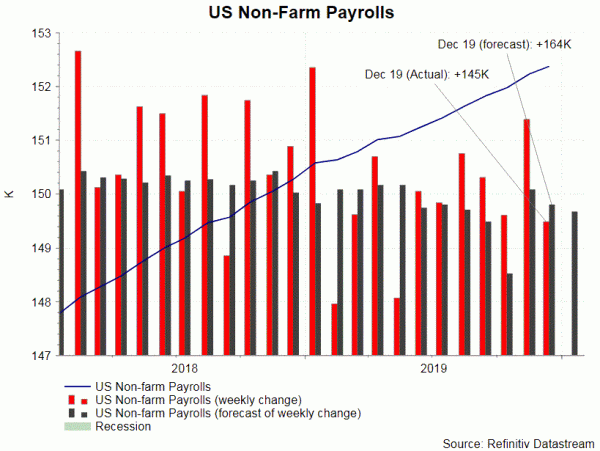It is widely expected that the Fed will leave the policy rate unchanged at 1.5-1.75% at the January meeting. Meanwhile, we believe the accompanying statement will contain only minor change from the one in December. Major economic data will be released days after the FOMC meeting. Yet, the Fed will likely reiterate that risk to growth is skewed to the downside. There will be no update on economic projections and median dot plot at the meeting.
The tone of economic developments since the December meeting has remained more or less the same, characterized by benign inflation and growth. Headline CPI steadied unchanged at +2.3% y/y in December, although monthly change eased -0.1 percentage point to +0.2%. Similarly, core CPI stayed unchanged at +2.3% y/y last month, with monthly change slipping -0.1 percentage point to +0.1%. The Fed’s preferred inflation gauge will be released later this week. The market anticipates the headline reading to have improved to +1.7% y/y in December, from +1.5% in the prior month. The core reading will probably stayed unchanged at +1.6%, lower than the +2% target.
US economy probably expanded at annualized +2.1% q/q in 4Q19, same rate as the prior quarter. Growth in the first half of 2020 might start with a soft tone. Boeing’s suspension of 737 MAX production will last until summer. This is expected to weigh on GDP growth for the first of the year. On the job market, non-farm payrolls increased +145K in December, missing consensus of a +164K addition. Yet, the unemployment rate stayed at record low of 3.5%.
Despite moderation to GDP growth and benign inflation, the overall tone has shown little change. Moreover, conclusion of US-China Phase I trade deal should have given policymakers some relief. We expect a high bar for monetary policy change to both sides. The Fed funds rate will stay unchanged at 1.5-1.75% in January. However, the IOER will likely be raised by +5 bps to 1.6%. This technical change aims at better aligning the effective funds rate with the mid-point of the target range.

















